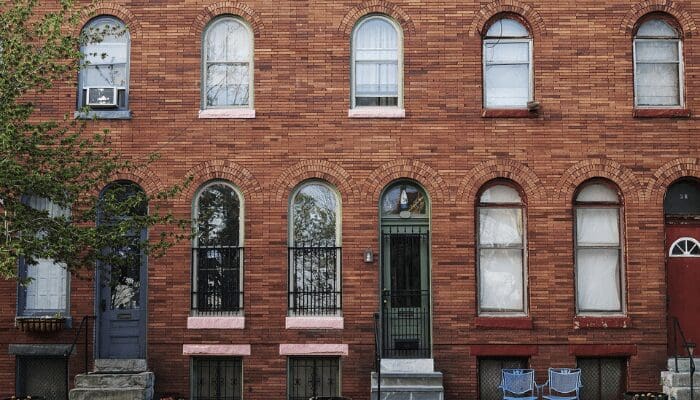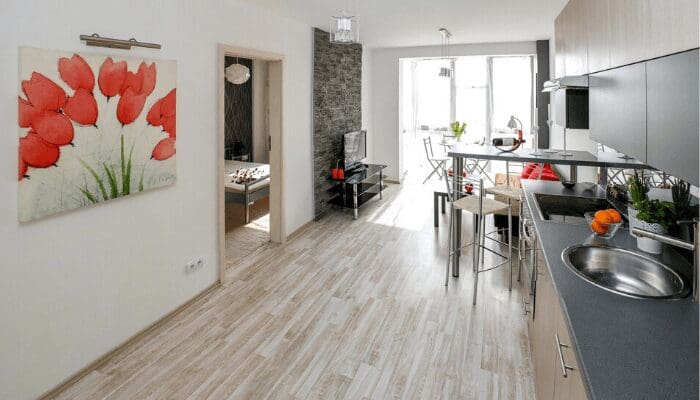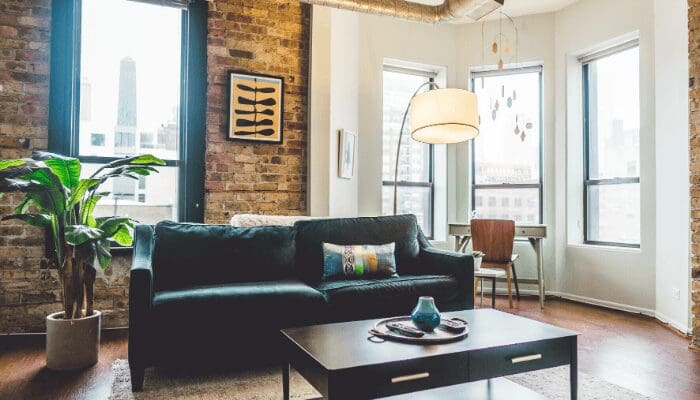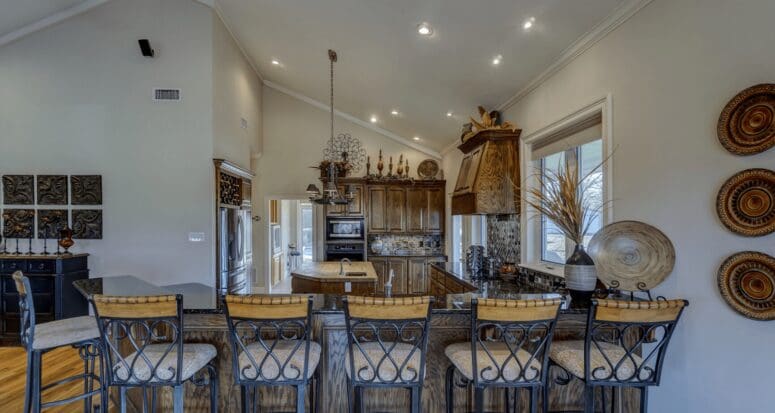This Is How Much Money You Need to Buy a House
- Published on
- 5 min read
-
 Emma Diehl Contributing AuthorClose
Emma Diehl Contributing AuthorClose Emma Diehl Contributing Author
Emma Diehl Contributing AuthorEmma's work has been featured in Huffington Post, NPR and XOJane. When she's not combing her neighborhood for open houses, she's writing about technology, real estate or data.
You’ve tallied your savings, checked your credit score, and browsed too many property listings to count. One mystery remains: how much money do I need to buy a house?
Rather than take you through a maze of questions only to leave with the unsatisfying answer of “it depends” (because it does), HomeLight asked three homeowners from across the country to give us some in-depth accounting on how much they saved and paid for their first home.
For each case study, you’ll get a hard number at the end: the total amount a real person saved before taking the homeownership plunge. Plus we’ll give you the human side of the data to add a level of comfort to this big financial decision.
How do I know if I’m ready to buy a home?
If you’ve been diligently saving for that place of your own, you just might be ready to start your house hunt. But before you get carried away with open houses and online listings, talk to a lender to get pre-approved for a mortgage, recommends Pam Charron, a Sarasota-based agent who loves working with first-time buyers, and who has sold 84% more properties than the average agent in her area.
You’re on the right track to get pre-approved if your finances fit the following categories:
- 43% DTI ratio
When it comes to your debt-to-income ratio, lenders typically don’t want to see you putting more than 43% of your gross monthly income paying down debt, including a mortgage, student loans, a car payment, or other obligations. - 30% rule
Generally, if you can keep your housing expenses to no more than 30% of your gross income, you’ll stay in the comfort zone. Otherwise, you could risk overextending yourself. - Credit score
Lenders will check your credit score to assess your likelihood of repaying the loan. You don’t need a perfect score, but most loan programs require a score of 620 or better, and some FHA programs may go down as low as 580. - Down payment
The typical down payment for first-time buyers is around 7% as of 2019. However, if your down payment is less than 20%, and you’re taking out a conventional loan, then you’ll likely need to factor in private mortgage insurance.
You should also account for other unexpected costs that can arise during the home purchase, such as taxes, maintenance, insurance, and HOA fees.
“If you’re buying into a condominium or a single-family home that has a homeowner association, what are the fees and are they expected to go up?” reminds Charron.
If the hypotheticals are making your head spin, head to HomeLight’s simple home affordability calculator, then check out the real-life examples detailed below.

Home budget case study #1: Jane’s 1880 Pittsburgh rowhouse
When Jane made the decision to return to her hometown for a job in tech, she also knew she was one step closer to her dream of owning a house. The self-declared “homebody” was sick of a revolving door of roommates and wanted to start building up equity on a property.
She’d been saving for a home for five years, and when she took a close look at Pittsburgh’s real estate market, she realized that dream was more attainable than she thought.
“I’ve settled in Pittsburgh because I enjoy my current job and I’m close to family,” Jane told HomeLight. “But I also wouldn’t be able to afford a home like this in a different city.”
Pittsburgh’s real estate market is starting to accelerate, but Jane had her eyes set on one of the more affordable neighborhoods that suited her needs. “I love the neighborhood — it’s walkable, bus-able and bike-able to all of the parts of the city that I frequent.”
The two-bedroom home “was built in 1880 but has been updated. It maintains its old-fashioned charm, but is perfect for a young person to live in.”
A fan of frugal living and budgeting, Jane made sure to be conservative when it comes to monthly mortgage payments. She looked for a home where she could afford to make mortgage payments on her own but was also large enough that she could live comfortably with a roommate and save a few bucks.
About Jane’s home
Home type: 1880s Rowhouse (2 beds, 2 baths)
Home price: $269,750
Upfront costs:
Down payment (incl. earnest deposit): 20% or $53,950
Closing costs (lender fees, transfer taxes): 4% of purchase price or $10,790
Ongoing costs:
Monthly mortgage payment (principal and interest): $969
Loan term: 30 years
Interest rate: 3.5% APR
Property taxes: ~$5,000 per year or $416 per month
Homeowners insurance: ~$1,000 or $83 per month
Average monthly maintenance: n/a
Private mortgage insurance: $0
Income and savings:
Gross Income: $95,000 or $7,017 per month
Amount needed for upfront costs: $65,000
Amount needed for savings cushion: $20,000
Total amount saved before home purchase: $100,000
Jane’s monthly housing costs total to around $1,468, or 21% of her gross monthly income.

Home budget case study #2: Paige and Chris’s Denver renovation-ready duplex
Paige and her partner Chris only recently wrapped up on renovations of the home they bought in Denver a year ago. When the couple moved there two years ago, buying a house wasn’t even on their radar.
But, after two years, “we witnessed the housing market explode,” says Paige. “We quickly realized that the momentum Denver was gaining meant opportunity long-term. We both had five years’ worth of savings and parents who were willing to help us be competitive in the market so we decided that we should invest as quickly as possible.”
Buying a house before the prices soared beyond their budget became a new priority. For Paige and Chris, it wasn’t about finding the perfect home for their tastes, but a property that had high rental potential in the future.
Not only could the couple live there now, but the right property could also come with a major payout in the future. A product marketer by day with a background in business, Paige turned to data and neighborhood trends to figure out how she could maximize her investment in a booming city.
Her strategy was to hone in on the perfect location instead of style of home. Chris and Paige kept their search limited to trendy neighborhoods that were on the cusp of popularity, which meant a lower sales price and settling for a home that was not quite ‘move-in ready’ and needed some work.
“Luckily, one of us is handy, the other is visionary and neither of us on an actual timeline so we did not mind putting in renovation work,” Paige and Chris told HomeLight.
About Paige and Chris’s home
Home type: 1913 brick duplex, listed as 3 bedrooms, 2 bathrooms with showers (no bathtub), 1500 sq ft.
Home price: $370,000
Upfront costs:
Down payment (incl. earnest deposit): 20% or $74,000
Closing costs (lender fees, transfer taxes): 4% of purchase price or $14,800
Ongoing costs:
Monthly mortgage payment (principal and interest): $2,500
Loan term: 15 years
Interest rate: 4.125% APR
Property taxes: $1,200 or $100 per month
Homeowners insurance: $1,500 or $125 per month
Average monthly maintenance: $300 in utilities, and an additional $200 for general savings and maintenance
Private mortgage insurance: N/A
Income and savings:
Gross income: $200,000 combined or $16,667 per month
Amount needed for upfront costs: $88,800
Amount needed for savings cushion: $5,000
Total amount saved before home purchase: $50,000 and an additional $24,000 loan from parents to compete with a 20% down payment
Paige and Chris’s monthly housing costs total to around $2,725, or 16% of their gross monthly income.

Home budget case study #3: Elizabeth and Nick’s duplex with room to grow in Washington, DC
When Elizabeth and her now-husband Nick moved to D.C. in 2013, she could barely stand to pay the rent.
“It felt like throwing money down the drain,” Elizabeth says.
She and Nick consciously budgeted, living in a studio apartment with their two hunting dogs to save on rent until they were ready to buy.
The market in D.C. was expensive and competitive, which left the couple feeling anxious and drained. However, they weren’t willing to settle for something they didn’t love, just because the pressure was on. The pair knew they needed space for the family they planned to start, as well as at least one guest room for the family that frequently visited from out of town.
Knowing their budget was limited, Elizabeth and Nick focused their efforts on neighborhoods that came with a lower price tag but still had homes with enough space to meet their needs.
In 2016, the couple bought a townhouse on the very outskirts of Washington, D.C. but still close enough to access public transportation (the metro and bus station) for easy commutes. “Our home was big enough to accommodate our plans for expanding our family and had a yard for our dogs,” explains Nick.
At the time, the investment felt like a gamble, but the area is more up-and-coming now than when they initially bought it. “It’s a relief,” says Elizabeth. “Property values are only going up here, and we get to have a hand in helping the neighborhood and area grow into its own.”
About Elizabeth and Nick’s home
Home type: Semi-detached 3 bed, 2.5 bath, 1,088 sq ft home
Home price: $479,000
Upfront costs:
Down payment (including earnest deposit): 10.5% or $50,000
Closing costs (lender fees, transfer taxes, etc.): 4% of purchase price or $15,639
Ongoing costs:
Monthly mortgage payment (principal and interest): $1,997
Interest rate: 3.75%
Loan term: 30 years
Property taxes: $2,975 or $247 per month
Homeowners insurance: $711 or $59 per month
Average monthly maintenance: ~$200 for emergency savings and upkeep
Private mortgage insurance: $91/month at time of purchase
Income and savings:
Gross Income: $167,025 combined or $13,918 per month
Amount needed for upfront costs: $65,639
Amount needed for savings cushion: $7,000
Total amount saved before home purchase: $85,000
Paige and Chris’s monthly housing costs total to around $2,394, or 17% of their gross monthly income.
The bigger the savings, the bigger the safety net
While formulas and calculators can help, no one has the same finances, and owning a home looks different for every buyer. The key is “there always has to be a little on reserve, don’t overextend yourself,” says Charron. “I’m seeing first-time homebuyers being much more conservative today, and I am very thrilled with that.”
Header Image Source: (Solomon Rodgers/ Pixabay)
